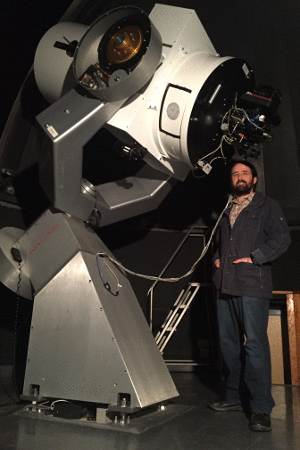
Phillip A. Reed, Ph.D.
|

|
|
|
My recent research activities include: (*asterisk indicates KU undergraduate student co-authorship)
Check ADS for a more complete list of papers & abstracts. The KU Observatory has been used to observe, with high precision photometry in multiple band-passes, the eclipses of binary stars that were discovered by NASA's Kepler Observatory. While their discoveries were a sort of "byproduct" of Kepler's search for habitable exoplanets, their continued study can help to measure fundamental properties of the stars. Here are some examples of Kepler follow-up work done at the KU Observatory: 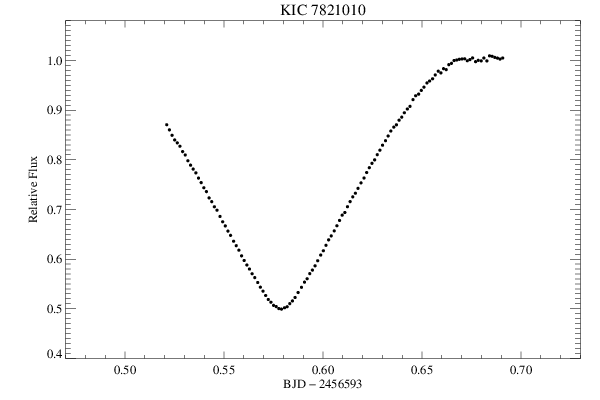 See here how our observations are being used by other researchers to measure stellar densities.  Nicknamed "Tatooinne", Kepler-16b was the first extrasolar planet found to orbit a pair of stars. The Kilodegree Extremely Little Telescope (KELT) project is run by Ohio State University, Vanderbilt University, Lehigh University, and the South African Astronomical Observatory. KELT monitors a wide field view of the sky to find candidates for new transiting extrasolar planets (exoplanets), by looking for very shallow dimming of the host star as a planet passes in front of it. The Kutztown University Observatory performs follow-up observations of KELT exoplanet candidates to either rule out the possibility of an exoplanet, or else to provide evidence supporting the presence of an exoplanet. 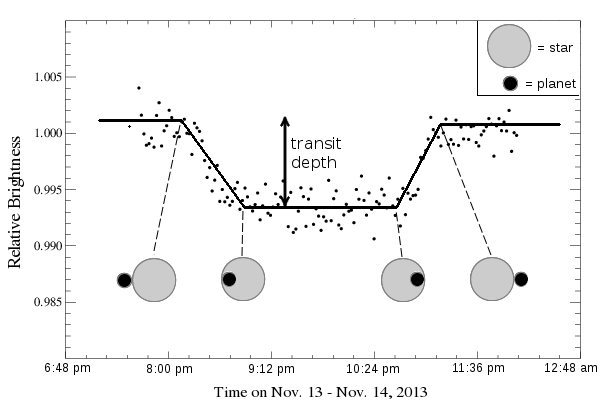 KELT-1b is the first exoplanet discovered by the KELT project. KELT-1b is a bit larger than the planet Jupiter, but orbits much closer to its host star. The depth of the transit is about 0.7%. In this figure, some positions of the star & planet during the transit are shown. 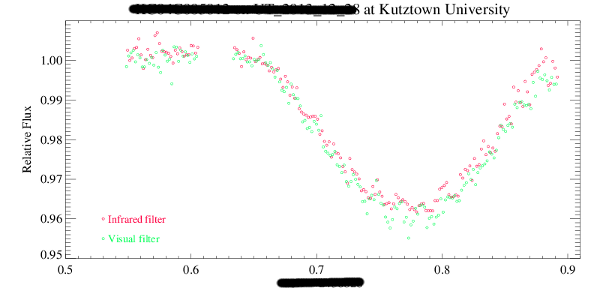 While the details of the star must remain secret, we might have a large planet or small star in orbit around a rapidly oscillating & pulsating bright star. My students and I have studied many stars that are magnetically active and interacting. By "interacting", we mean that material is transferring from one star to the other. Here is an animation of an interacting binary star that we discovered to also be magnetically active. The magnetic activity cycle of the large red star has a period of about 28 years, as compared to our Sun's 11-year activity cycle. 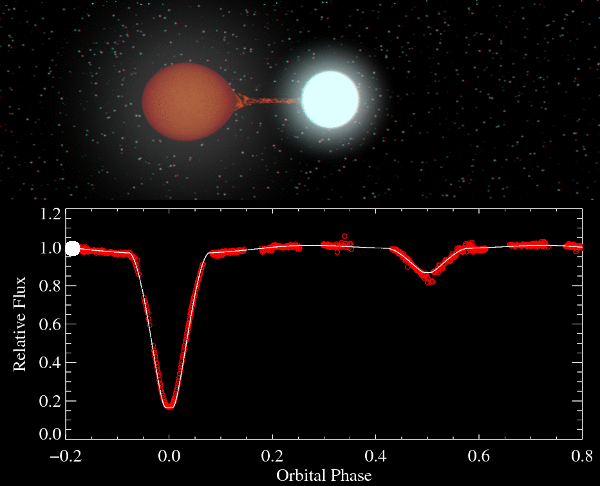 |